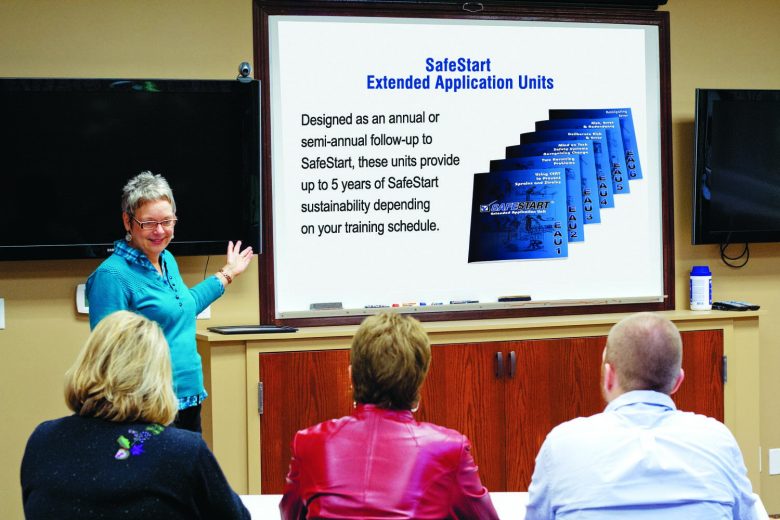Few safety trainers are completely satisfied with how much workers remember in the weeks and months following training. As an article on retaining education and training knowledge in Safety + Health’s May 2016 issue points out, this is often because trainers are overlooking one or more essential aspects of long-term knowledge retention.
Step 1: Knowledge retention requires practice. Practice is a major contributor to knowledge retention. To maximize the benefits of practice, it should happen both in the classroom and for a while afterwards. As Dennis Carnrike, SafeStart Director of Implementation Services, says in the article:
In the classroom, this means presenting each concept and then reinforcing it with workbook exercises, discussions and storytelling. Outside of the classroom it means hands-on applications, visual reminders, checklists and procedures, supervisor coaching, peer-to-peer and group discussions, toolbox talks, and pre-shift meetings.
Step 2: Practice requires repetition. Inherent in the idea of practice is the notion of repetition. Habits play a large role in safe behavior, and building proper safety habits through repetition is a key element to getting workers to retain knowledge and avoid having to rely on memory. It also gives them a safety net to fall back on if they get complacent.
Step 3: Repetition requires motivation. Dennis notes that for workers to invest the effort it takes to put in the repetition required to retain safety training, there needs to be some type of motivation in place. That motivation has to focus on something that matters to them, like keeping their families safe or personal goals that extend beyond the workplace. If employees are truly going to be able to use safety training long after they’ve left the classroom, they need to be motivated on their own terms.
(For more details on how to focus on their agenda, check out page 13 of this guide on back injuries—there’s some great info on habits and repetition in there too.)
Step 4: Motivation requires support. As important as it is, motivation isn’t enough. EHS managers can show safety leadership by providing ongoing support for employees in the form of motivation, reinforcement, and encouragement. This can help employees build habits together, makes it easier to identify any knowledge gaps, and allows hands-on refresher training to be offered in a timely manner.
The full article is worth a read, especially for anyone interested in improving knowledge retention rates of their next safety training session. It’s available online here from Safety+Health.

